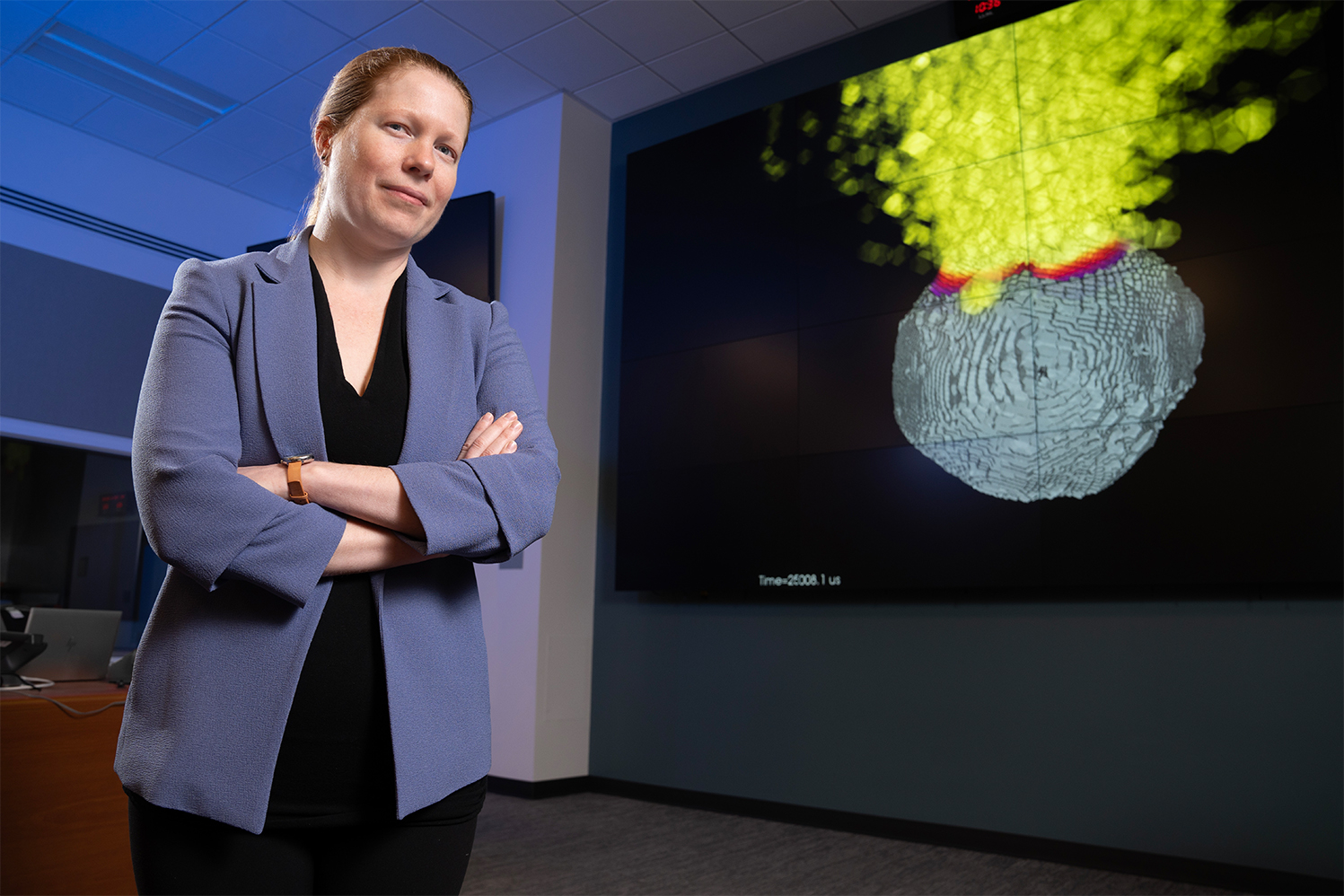Advancing Planetary Defense Against Asteroid Threats: New Nuclear Deflection Simulations

December 19, 2023
This article has come under scrutiny following Science X's editorial process and their policies. Editors took the time to ensure the article's credibility, highlighting various factors including:
- Fact-checking
- Peer-reviewing the publication
- Trusted sources
- Proofreading
With the Lawrence Livermore National Laboratory overseeing the process
The team at Lawrence Livermore National Laboratory (LLNL) has developed a toolbox model which can determine the viability of using a nuclear weapon to protect Earth from catastrophic asteroid collisions.
The research, which has been published in the Planetary Science Journal today, provides a new method for simulating the energy transferred from a nuclear weapon to the surface of an asteroid. This tool reveals more about how radiation from nuclear deflection interacts with the asteroid's surface, and also allows for more research on the shockwave dynamics that impact the asteroid's interior.
The model will aid researchers in furthering the understanding they have achieved through NASA's recent Double Asteroid Redirection Test (DART) mission. In this mission, which occurred in September 2022, an asteroid’s trajectory was manually altered by impacting it with a kinetic impactor. But as there are restrictions in the mass that can be sent to space, nuclear deflection continues to be investigated as a potential alternative to kinetic impact missions.
LLNL physicist Mary Burkey, who spearheaded the research, points out that nuclear devices, which have the highest energy-to-weight ratio of any human technology, are an extraordinarily critical tool for mitigating asteroid threats.
'By launching a nuclear device millions of miles away towards an impending asteroid, given that we have sufficient warning, we could either deflect the asteroid intact with a measured thrust away from the Earth or disrupt it by breaking it into small, quick fragments and cause them to miss Earth,' said Burkey.
According to Burkey, to make valid predictions about the success of nuclear deflection missions, intricate multiphysics simulations are required. The simulation models created by LLNL take into account a variety of physical elements, making them highly complex and requiring high computational resources.
The paper presented a library of X-ray energy deposition functions, designed with the Kull radiation-hydrodynamics code, that is both accurate and efficient. The high-fidelity simulations consider multiple initial conditions including radiation fluences, source duration, and angles of incidence, along with photons penetrating surfaces of asteroid-like materials – such as rock, ice, and iron – while keeping in mind complex processes like re-radiation. Due to this all-encompassing approach, this model can be applied in a variety of potential asteroid scenarios.
Megan Bruck Syal, planetary defense project lead at LLNL, highlights the importance of high-fidelity simulation models when it comes to real planetary defense emergencies, as these models can give decision-makers vital, risk-informed information which could potentially avert asteroid impact, safeguard vital infrastructure, and save human lives.
Though there is a slim chance a massive asteroid will hit Earth in one’s lifetime, Bruck Syal warns about the possibility for dire consequences.
The research team at LLNL, led by Burkey, included Robert Managan, Nicholas Gentile, Bruck Syal, Kirsten Howley, and Joseph Wasem as co-authors.
The Planetary Science Journal
The information was provided by Lawrence Livermore National Laboratory




